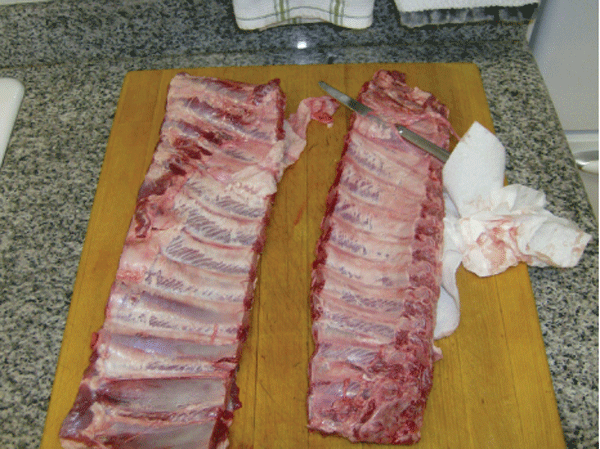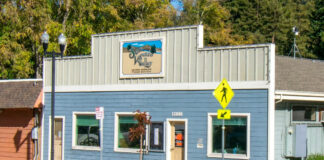My Hubby Norm and I have many long distance friends that come to visit us for several days at a time.
Eager to see them and make them as welcome as I can, my first question is always “what do you want for dinner?” and their reply…”your ribs, of course,” is always the same. And without fail, later, during the 11 o’clock news, the refrigerator door opens and out comes the leftover ribs. We all sit in the living room, munching on those ribs. Licking fingers and smacking lips, we decide among us,” these are the best ribs ever,” bar none!
More people are cooking pork than ever before. In the past, people were concerned about trichinosis in pork and hence overcooked it; as a result, pork was served only when it was well done to ensure the meat was safe to eat and to melt out the fat. We have long since learned these parasites are destroyed when the internal temperature reaches 140 degrees Fahrenheit.
The greatest enemy in cooking pork is cooking to a too high internal temperature which will always result in a dry and tough piece of meat. Cutting into the meat to exam color and doneness causes too many good juices to run out. Keeping your finished pork between 155 to 160 degrees Fahrenheit (never over) is your recipe for a juicy and tender piece of meat. This holds true for roasts, tenderloin and thick chops.
When buying your pork look for an even pink color with little fat marbling and a thin edge of fat around the edge of the meat. The flesh should be firm and smell sweet.
If you are new to cooking pork or have had poor results in the past, the following tips should help.
First, buy a meat thermometer, one that has a small rod which will not leave a large hole in the meat. I go in from the top rather than the side of the meat.
I have found grocery store thermometers have too large of a rod which results in too many of the meats’ juices escaping. Here in the valley I have found a great selection of thermometers (at a fair price) at the Mountain Feed store in Ben Lomond.
Secondly, and most important, when cooking a roast, you are bound to cook it for 30 minutes per pound at 350 degrees Fahrenheit. For example, cook three pounds for 1 ½ hours at 350 degrees.
Thirdly, for roasts 3 pounds and up, drop your cooking temperature 25 degrees per pound and add ½ an hour per pound to your cooking time, making doubly sure that you do not exceed its’ internal temperature of 160 degrees Fahrenheit. Like beef, let roasts rest 15 to 30 minutes to redistribute juices before carving.
Pork ribs are another matter. I personally have been served ribs only twice, and each time they were dried out, overdone, tough and with sauces cloyingly sweet.
The following recipe will result in tender and succulent, fall of the bone ribs, whether they be St. Louis cut, or my favorite, baby back ribs.
Total marinade and cooking time: 3 to 6 hours.
Two slabs (4 to 5 pounds each) of any of the above ribs, silver skin removed. (This is the thin skin lining the bones).
Six cloves garlic crushed into 1 tablespoon vegetable oil
2 teaspoons prime rib seasoning (Available at most markets).
1 teaspoon each, salt and pepper
Rub into meat and rest one-half hour.
Preheat oven 325 degrees. Prepare a cookie sheet with aluminum foil enough to completely wrap and seal ribs.
Place ribs on medium high heated grill. Grill on each side for 12 to 15 minutes until you achieve the browning desired.
Transfer ribs to foil on prepared pan and seal completely. Place in oven for 2 hours for baby back ribs.
If preparing St. Louis ribs, follow all steps above but cook in a 225 degree oven for 5 to 6 hours.
Open sealed packet and brush on sauce. Return to oven uncovered for 20 minutes.
Barbecue Sauce (Optional). 1 ¼ cups
Sauté ½ cup diced onions in 2 tablespoons butter, then add:
¾ cup ketchup
2 tablespoons French’s mustard
2 tablespoons Worchester Sauce
¼ cup brown sugar, packed
¼ cup wine vinegar
1 tablespoon lemon juice
1 tablespoon Horseradish
1 to 2 cloves crushed garlic
1 teaspoon Tabasco
1 teaspoon dry mustard
Simmer 15 minutes













